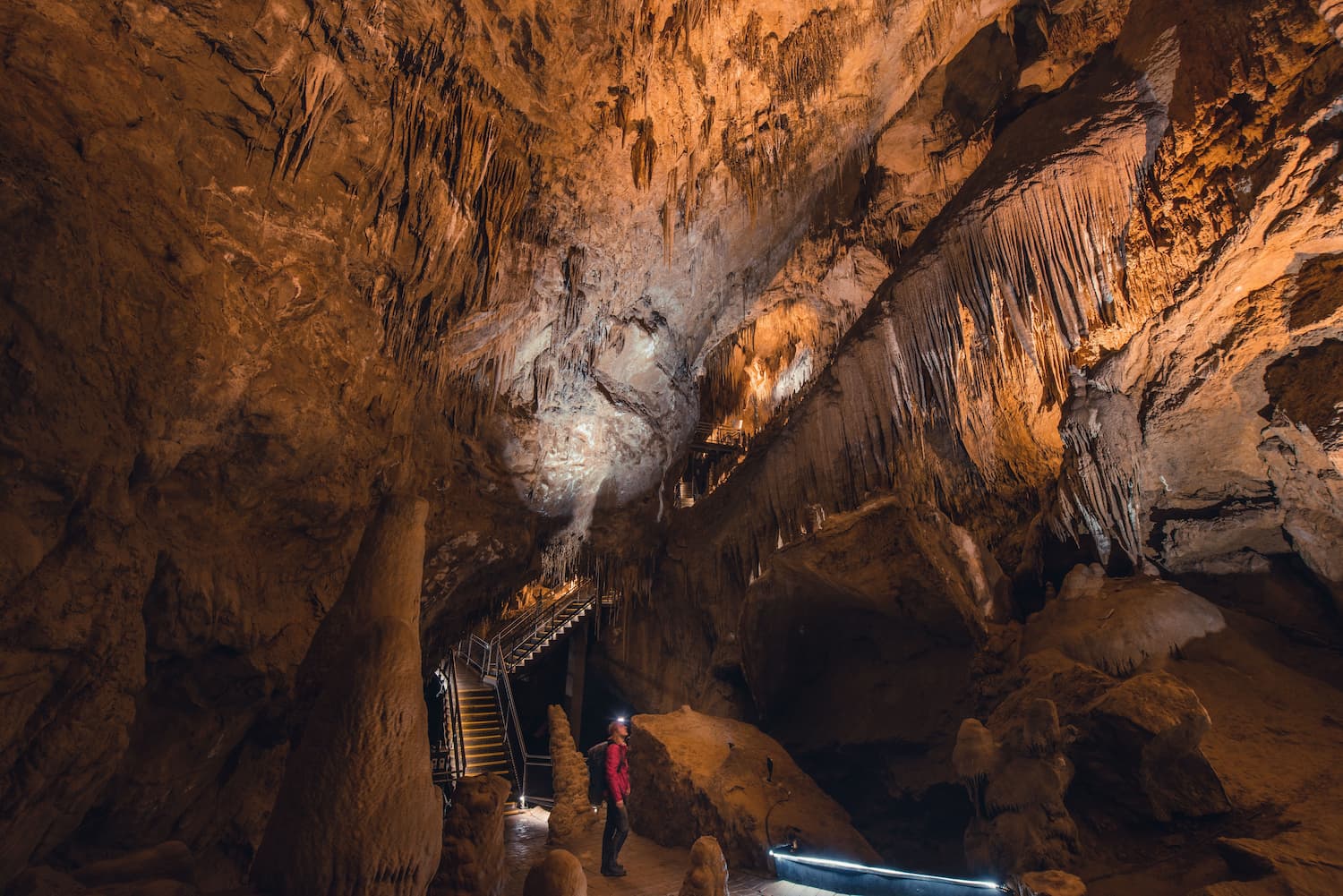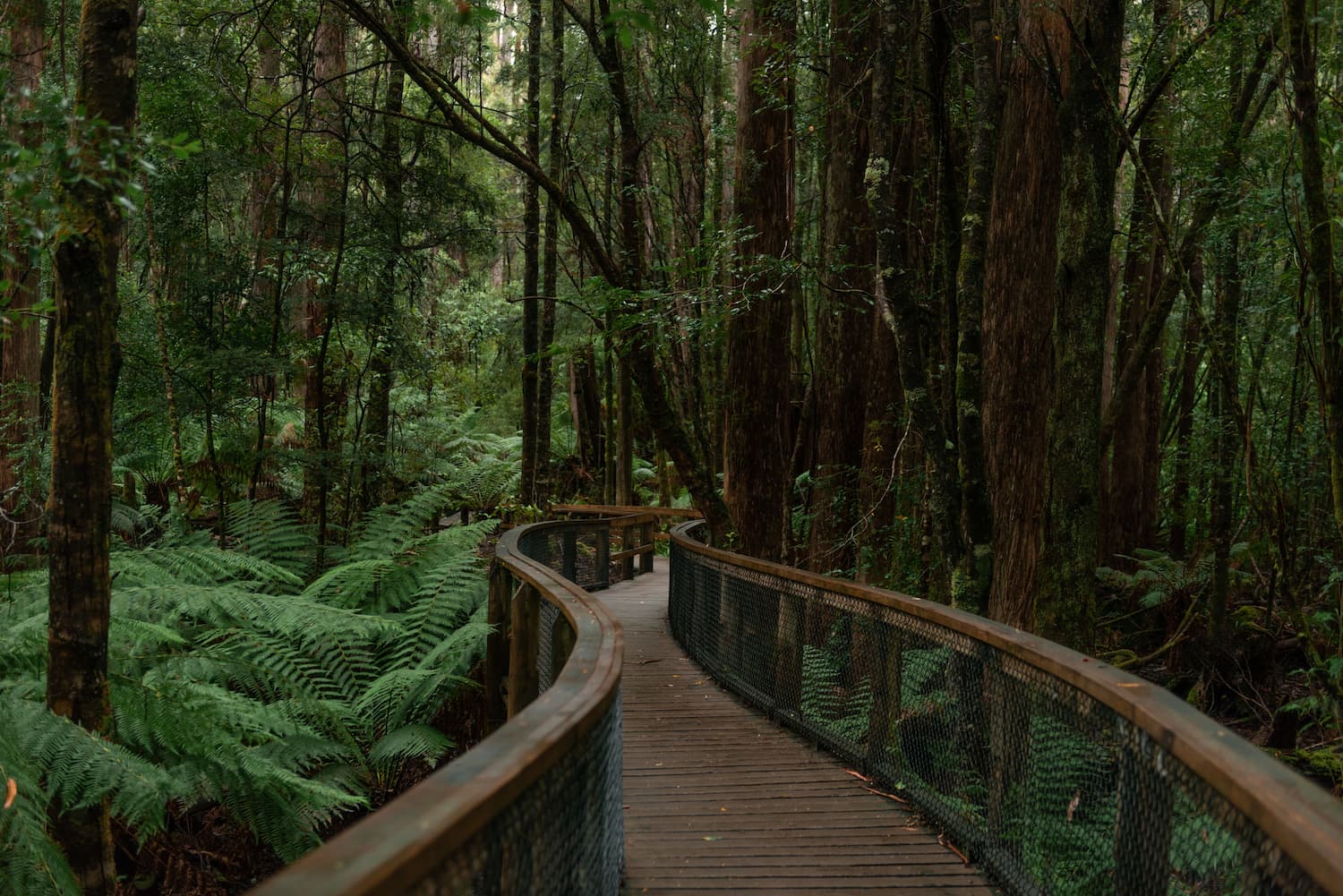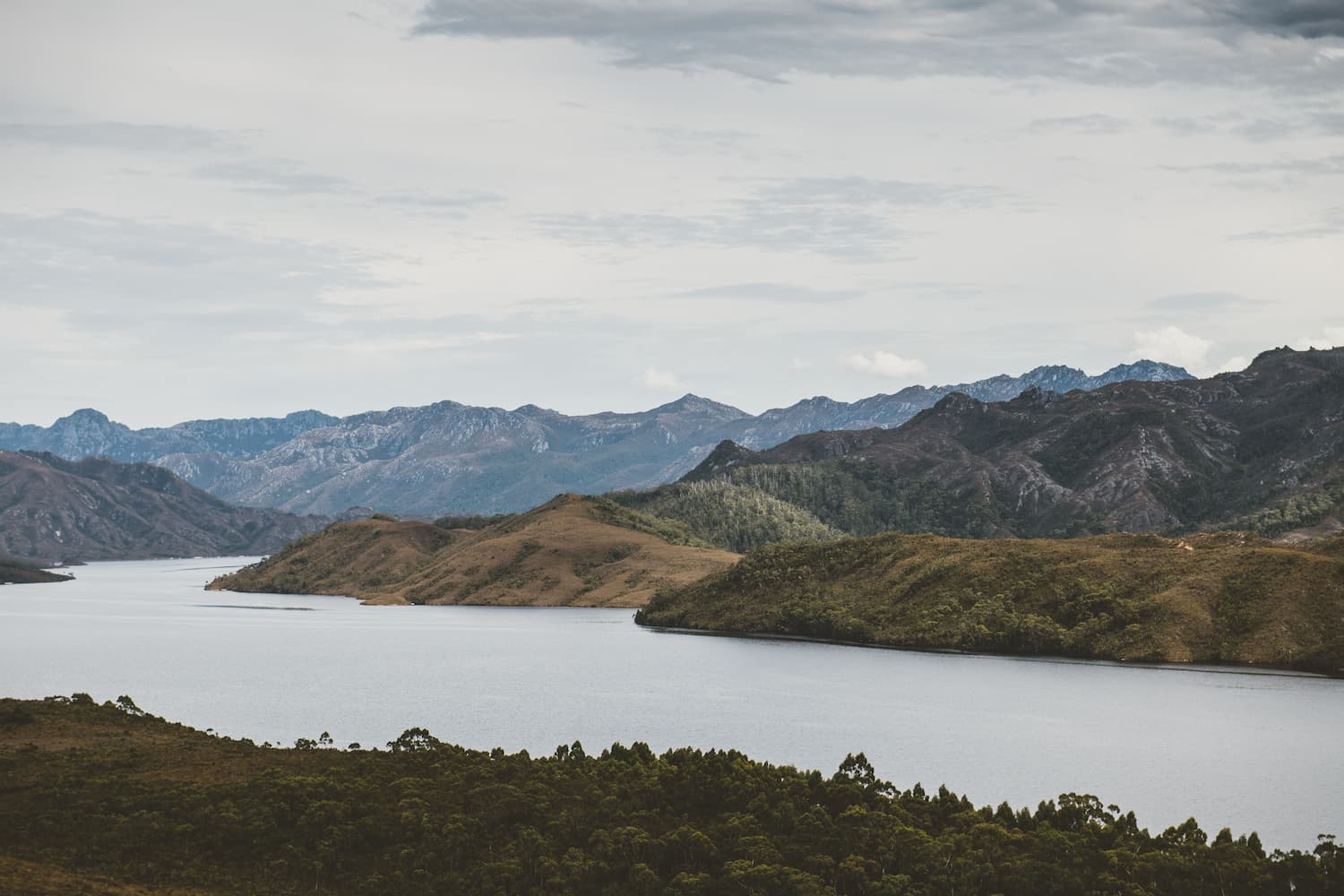The Huon Valley region is accessible from Hobart by the Huon Highway and has a splendid array of fruitful orchards, quaint towns, wild landscapes and unique adventures. Remember also that you can combine this itinerary with our other regional guides to create an in-depth itinerary for your ideal holiday.
Kingston is 15 minutes’ drive south of Hobart on the A6 and has the Australian Antarctic Headquarters and the Tinderbox Vineyard. Further south, stop in at the Margate Train for a bite to eat and a look around their unique train carriage shops. Brookfield and Nandroya Vineyards are nearby, and the Inverawe Native Gardens and Pear Ridge Gardens have beautiful landscaped gardens and walks. The North West Bay Golf Course offers stunning views of Bruny Island and the D’Entrecasteaux Channel. Markets held in Margate include the Margate Train Market and the Brookfield Vineyard Market. Five kilometres south of Margate is Snug, a charming coastal town, home to the Channel Heritage Museum. South of Snug is Kettering, the departure point for the Bruny Island ferry that operates daily, and the Bruny Island Cruise Kettering pickup. Kettering is also home of Herons Rise Vineyard.
Bruny Island is home to the South Bruny National Park, which offers great bushwalks and wonderful wildlife. To experience Bruny Island by water, try a Bruny Wildlife eco cruise that showcases the stunning coastline of the island. There is a wide range of mouth-watering produce, including handmade fudge, chocolate, truffles, berries, cheese, Honey and fresh oysters. Indulge in quality desserts at the Bruny Island Berry Farm or visit Hiba, a factory outlet for Bruny Island fudge, which also has some wonderful gardens to visit. Bruny Island is home to Bruny Island Vineyards, Australia’s southern-most vineyard and Bruny Island House of Whisky. The Bligh Museum of Pacific Exploration is a privately run museum holding memorabilia of Captain William Bligh’s life and voyages. The Cape Bruny Lighthouse is the third oldest Commonwealth light station in Australia, built in the 1800s by convict labour.
Back on the mainland south of Kettering on the B68, are the towns of Woodbridge and Birches Bay. The Woodbridge Hill Handweaving Studio allows you to watch Tasmanian textile artists at work, and Birches Bay offers the Grandview Vineyard, Grandvewe Farm Cheesery and Five Bob Café that produces Australia’s native pepper crop and operates an essential oils distillery.
Continuing on the B68 is the town of Cygnet, best known for the Cygnet Folk Festival that entertains audiences every January. Art displays are found at the Lovett Gallery and Stanley’s Studio & Gallery. The Cygnet Regatta is a sailing regatta on every March that is now one of the largest keel-boat regattas in Tasmania. Just south of Cygnet is Lymington, where you will find delicious treats with Tassie Blue Blueberries and Tru-Blu Berries berry farms.
An alternative route to travel from Kingston is the A6, which will take you to the town of Grove. Grove is home to the Huon Valley Apple Museum and Homehill Vineyard & Winery Restaurant, both well worth a visit for sampling local produce.
Further south on the A6 is Huonville, the Huon Valley’s largest town, which offers an abundance of activities including the thrilling Huon Jet boat Ride or pick up some freshly grown mushrooms at Huon Valley Mushrooms. The Taste of the Huon is held every March and is one of the state’s most popular regional events, where you can sample the best of the Tasmania’s produce.
Continuing down the A6 are Franklin and Port Huon. In Franklin, find the Panorama Vineyard, the Wooden Boat Centre and Tas-Saff – Australia’s first commercial saffron grower. Port Huon is home to the Enchanted Woods, specializing in timber and woodcraft.
Geeveston provides a variety of attractions, including the Southern Design Centre and the popular Tahune Forest Airwalk and Visitor Centre or enjoy the Arve Forest Drive. Dover, just south of Geeveston on the A6 ensure you take an enchanted walk at Duck Hole Lake and for the more adventurous Adamsons Falls. Esperance Adventures offer remarkable wilderness journeys that let you immerse yourself in the scenic beauty of Southern Tasmania.
Further south is Hastings, popular for the Hastings Caves and Thermal Springs. In this area, you will also find the Hastings Forest Drive picnic area. Hastings is also the edge of the Cockle Creek/Southwest National Park, a protected area that dominates much of Tasmania’s southwest. Continue on to Southport, which offers serene escape with beautiful beaches, rich history and outdoor adventures making it a perfect destination to relax & explore.
The westerly route to the southwest region begins at Bushy Park, 16 minutes from New Norfolk on the B62. Bushy Park is a quaint town full of old houses, deciduous trees and hop fields, which envelop the town. In the middle of a hops field is the Text Kiln, with quotations inscribed on its walls dating back to 1867. The Water Race is a 3km water race that takes water from a Styx River dam and runs it to the Oust House- a waterwheel that once generated electricity to dry the hops. It is claimed that Bushy Park may have even had electricity before Hobart.
Mt Field National Park is accessed by one of two visitor sections. The first is near the park entrance at Westerway – north of Bushy Park on the B62 and includes picnic facilities and the famous Russell Falls. Take a stunning walk through the majestic fern forests, with some of the tallest trees in the world. The second visitor section is centred at Lake Dobson and includes day walks and skiing areas. Dramatic mountain scenery and alpine vegetation is a feature of the higher parts of the park.
Also from Bushy Park, travel 26 minutes west on the B61 to Maydena, a quaint township built alongside the River Tyenna. There are great day trekking tours around the southwest that begin in Maydena at the Maydena Adventure Hub.
Two kilometres past the Maydena boundary towards Lake Pedder, are the Florentine Valley and the Styxz Valley tall tree reserves, where some of the tallest hardwood trees on earth can be found.
Continue west on the B61 to the furthest point to drive in the southwest wilderness area to Strathgordon. Strathgordon was the construction township for the hydro-electric schemes in the Gordon/Pedder area. Lake Gordon and Lake Pedder together comprise the largest inland freshwater storage in Australia, occupying 1% of Tasmania’s total area. Both lakes are drawing cards for giant trout fishing and have good boat-launching facilities and boats. Near Strathgordon is the visitor centre at the Gordon Dam, the site of Australia’s longest vertical abseil. The Creepy Crawly Walk, along Scotts Peak Rd, is an interesting rainforest walk.
To fully appreciate the south west you can opt for a day trekking tour from Strathgordon or Cockle Creek, or a light aircraft flight tour over the forest.








